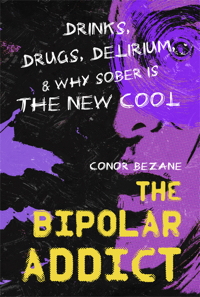 When you hear the words “mentally ill,” the first thing that comes to mind is probably “crazy” — and we have the media’s negative depictions to thank for that. The truth is, many of us who are mentally ill manage our symptoms with medication and therapy and are able to lead normal or near-normal lives.
When you hear the words “mentally ill,” the first thing that comes to mind is probably “crazy” — and we have the media’s negative depictions to thank for that. The truth is, many of us who are mentally ill manage our symptoms with medication and therapy and are able to lead normal or near-normal lives.
Stereotypes about mental illness abound in pop culture, whether it’s the schizophrenic madman or the bipolar kook.
“The worst stereotypes come out in such depictions: mentally ill individuals as incompetent, dangerous, slovenly, undeserving,” Stephen Hinshaw, a professor of psychology at the University of California–Berkeley, told US News and World Report. “The portrayals serve to distance ‘them’ from the rest of ‘us.’”
Donald Diefenbach, Ph.D. – a professor of mass communication at the University of North Carolina at Ashville – analyzed 127 mentally ill characters on TV. Of those, 33.9 percent of them were depicted as violent.
A 2014 study by lead researcher Jillian Peterson, Ph.D. at the University of California, Irvine and others found that of crimes committed by the mentally ill, only 7.5 percent were directly related to their illness.
“When we hear about crimes committed by people with mental illness, they tend to be big headline-making crimes so they get stuck in people’s heads,” Peterson, said. “The vast majority of people with mental illness are not violent, not criminal and not dangerous.”
In 2007, Diefenbach looked at 84 hours of primetime television and concluded that characters with mental disorders were almost ten times more likely to be violent criminals than those without mental illness (Diefenbach and West, 2007).
I did some research as well as watching and found several examples of negative character portrayals.
On an episode of The Practice – aired April 7, 2003 – a bipolar woman kidnaps a television executive, threatening to kill him on live TV.
In an episode of CSI that aired Jan. 9, 2003, a woman with bipolar refuses to take her lithium. Her father sedates her and slits her wrists to mimic a suicide attempt in order to get her committed to a psych ward. Instead, she bleeds out and dies. The episode is filled with stigmatizing language and negative portrayals of bipolar disorder.
In 1999, a promo for Frasier featured a picture of Kelsey Grammer in a straightjacket, with the tagline, “You don’t have to be crazy to be crazy about Frasier.”
More recently, actress Kelly Reilly plays a famous bipolar neuroscientist named Catherine Black in the short-lived 2014 ABC drama Black Box. She is seen going off her meds and almost immediately flipping into a manic episode. In reality, going off your meds would most likely take weeks to spark a manic episode. Also, the depressive side of the disease — which is rarely violent — is not portrayed.
But it’s not all bad. I remember Sally Field appearing as a bipolar mother on ER in the ‘90s and it was a fair depiction.
As of late, media portrayals in movies and TV have been increasingly more accurate.
On Showtime’s Emmy-winning series Homeland, Claire Danes plays bipolar CIA agent Carrie Mathison. Danes’ performance is a spot-on portrayal of the disease and depicts all aspects of bipolar, from mania to depression to stability. The character is also highly successful, an aspect that is rarely seen in other media depictions of the mentally ill.
In Silver Linings Playbook, Bradley Cooper plays a man with bipolar who gets stable and falls in love with a woman with borderline personality disorder, played by Jennifer Lawrence in an Oscar-winning role. Both are bona fide accurate depictions. Cooper and Lawrence go on to rehearse and successfully compete in a dance competition as completely normal human beings with an eccentric routine.
As the stigma slowly dissipates, will we see more positive portrayals of those with mental illness? Likely. But the stereotype of the homicidal madman remains, and there’s almost nothing we can do about it. We can boycott those shows that are unfair to our kind. And keep fighting the stigma by being upstanding citizens ourselves.
We can win the hearts and minds. Just as with the gay rights movement, if we come out of the closet and show people our true, normal selves, one-by-one we can destigmatize. Then and only then will people see that “mentally ill” doesn’t always mean “crazy.”







